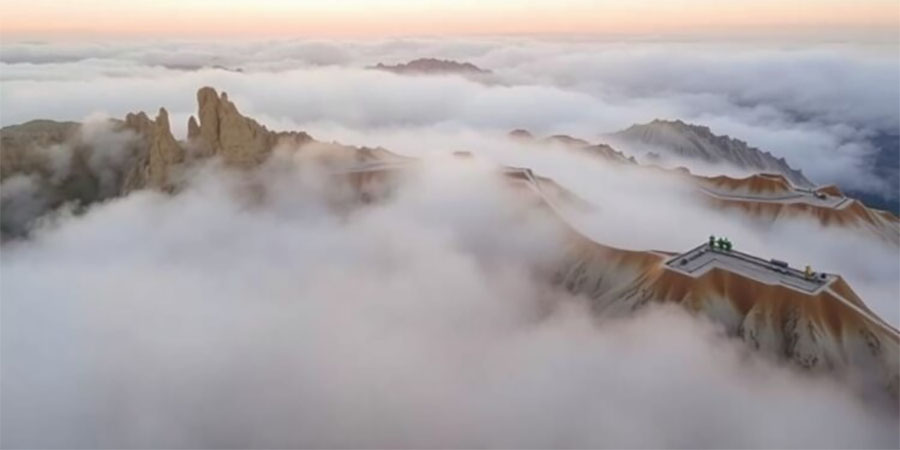
Photo Credit: Getty Images
Imagine drinking water that comes straight from the clouds. In the desert city of Alto Hospicio, Chile, scientists believe that capturing water from fog could be a game-changing solution to the region's ongoing water crisis.
With less than 5mm of rainfall per year, Alto Hospicio is one of the driest places on Earth. Many residents, especially those living in slums, rely on drinking water delivered by truck. But a team of researchers led by Dr. Virginia Carter Gamberini from Universidad Mayor believes there's a better way: harvesting fog on a large scale.
The idea is simple yet effective. Large mesh nets are hung between poles, capturing moisture from the fog that regularly drifts over the Pacific Ocean and into the mountainous city. The droplets that form on the mesh then flow into storage tanks, creating a fresh supply of clean water.
Fog harvesting isn't a new concept—it has been used on a smaller scale in rural communities across Latin America and in places like Morocco. But Dr. Gamberini and her team believe Alto Hospicio's unique geography and climate make it ideal for a large-scale system.
Based on their research, published in Frontiers of Environmental Science, scientists found that fog harvesting has the potential to provide a significant and sustainable source of water for Alto Hospicio. A large-scale system using 17,000 square meters of mesh could generate enough water to replace the 300,000 liters currently delivered by truck each week, offering a reliable supply for the city's most vulnerable residents. Additionally, 110 square meters of mesh would be sufficient to meet the water needs of all the city's green spaces, helping to maintain urban vegetation in an otherwise arid environment. Beyond drinking water and irrigation, fog harvesting could also be used to support hydroponic farming, with researchers estimating that this method could produce up to 44 pounds of vegetables per month, offering a potential boost to local food security.
Alto Hospicio, located on the edge of the Atacama Desert, relies heavily on underground aquifers—ancient water reserves that are being depleted at an alarming rate due to urban growth, mining, and industry. As demand increases and climate change worsens, finding sustainable water sources is critical.
Dr. Gamberini describes fog harvesting as a way to enhance cities' resilience to climate change while improving access to clean water. She and her team are now working on a fog harvesting map for the entire country, identifying key locations where this technology could be expanded.
Chile's unique landscape—with its long coastline and mountainous terrain—makes it a prime candidate for large-scale fog harvesting. If successful, this method could provide a sustainable, low-cost solution to water shortages in urban areas across the world.
With cities growing and water scarcity becoming an increasing concern, capturing water from the clouds might just be the innovation that transforms how we think about water supply in the 21st century.
















